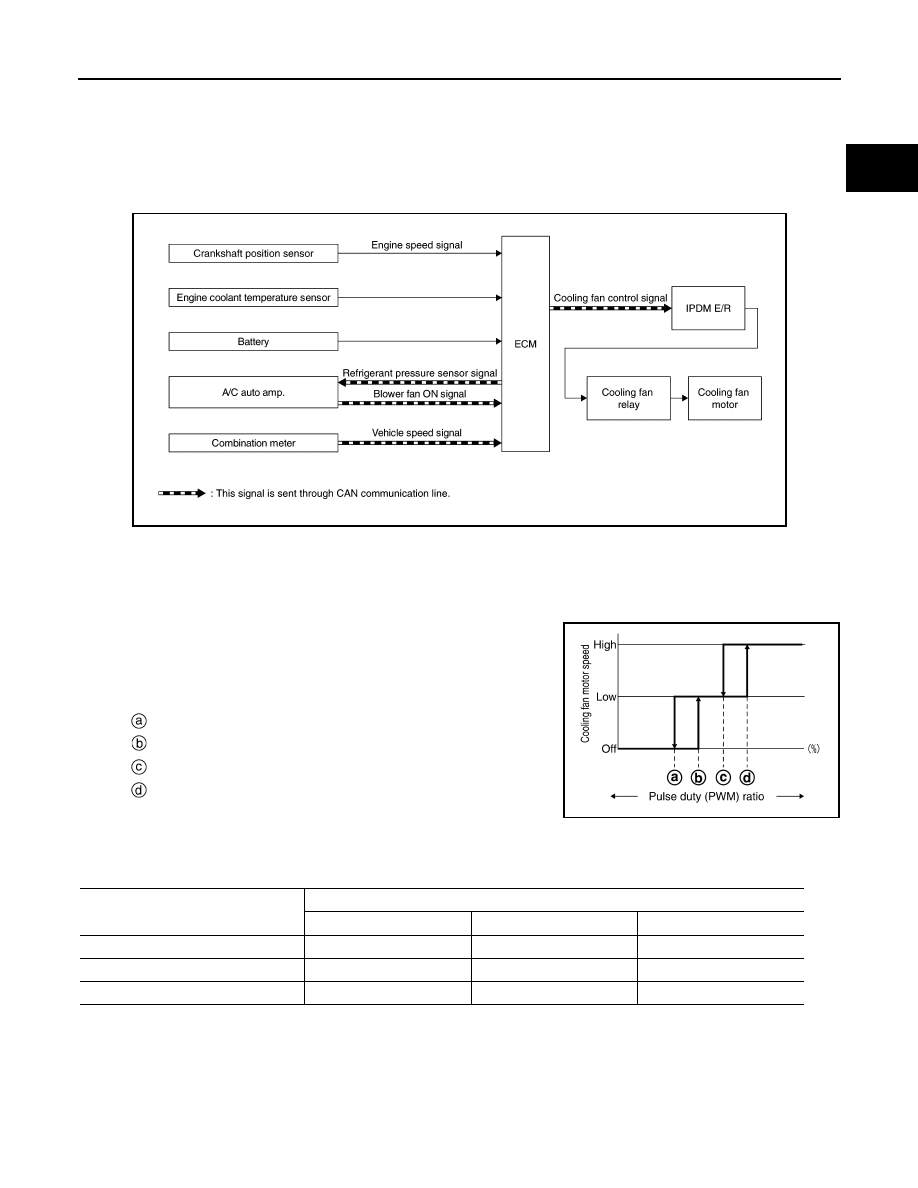содержание .. 730 731 732 733 ..
Nissan X-Trail 32. Manual - part 732

SYSTEM
EC-57
< SYSTEM DESCRIPTION >
[MR20DD]
C
D
E
F
G
H
I
J
K
L
M
A
EC
N
P
O
• When deceleration (accelerator pedal ON
→
OFF), ECM controls the engine speed by optimizing throttle
opening to minimize shift shock and exhaust gas emission.
COOLING FAN CONTROL
COOLING FAN CONTROL : System Description
INFOID:0000000010775041
System Diagram
SYSTEM DESCRIPTION
ECM controls cooling fan speed corresponding to vehicle speed, engine coolant temperature, refrigerant pres-
sure, air conditioner ON signal. Then control system has 3-step control [ HIGH/LOW/OFF ].
Cooling Fan Operation
ECM transmits a pulse duty (PWM) signal to IPDM E/R.
IPDM E/R has threshold value to the pulse duty (PWM) signal and
operates cooling fan motor with three phases of [HI (high-speed) /
LOW (low-speed) /OFF].
Cooling Fan Relay Operation
The ECM controls cooling fan relays in IPDM E/R through CAN communication line.
INTAKE VALVE TIMING CONTROL
JSBIA5006GB
: Less than 30% (OFF
←
low-speed)
: More than 40% (OFF
→
low-speed)
: Less than 50% (low-speed
←
high-speed)
: More than 60% (low-speed
→
high-speed)
JSBIA5007GB
Cooling fan speed
Cooling fan relay
1
2
3
Stop (OFF)
OFF
OFF
OFF
Low (LOW)
OFF
ON
OFF
High (HI)
ON
OFF
ON